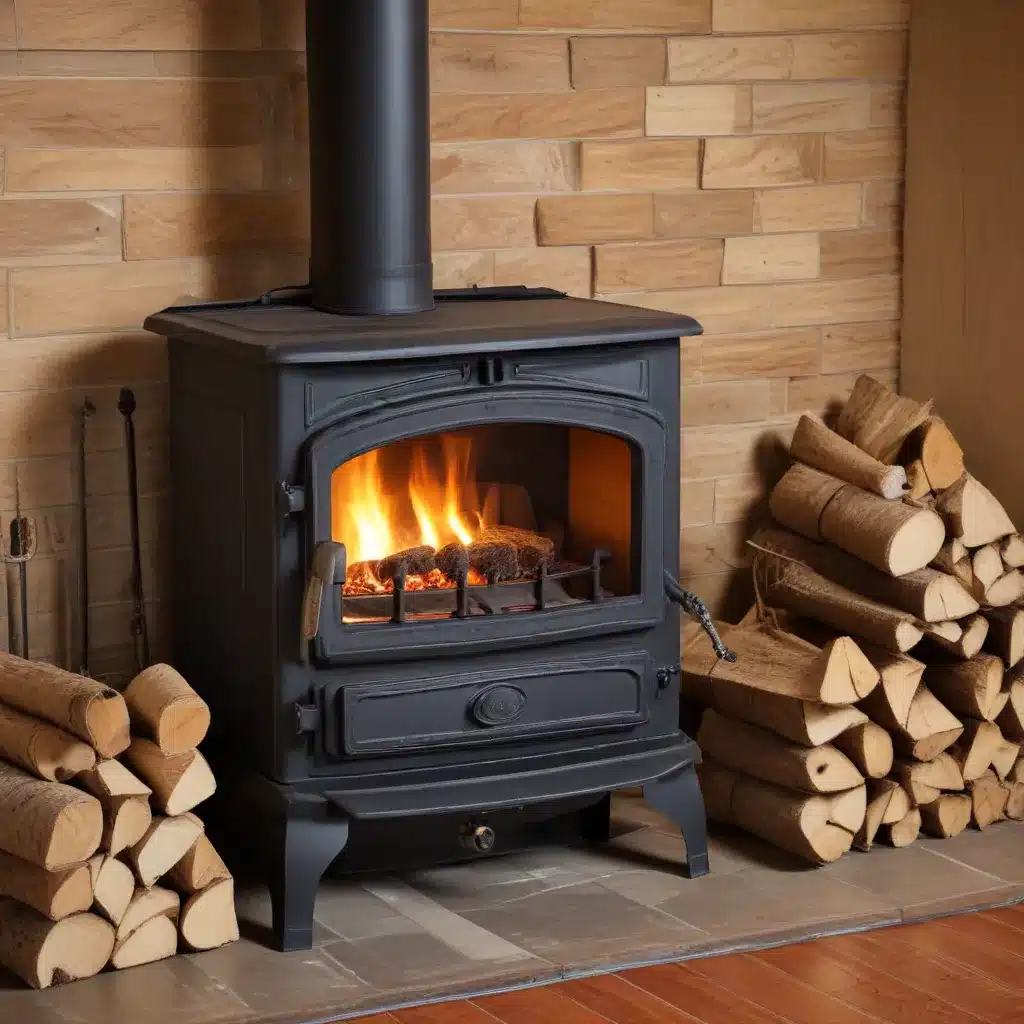
The Enduring Appeal of Wood Stoves
There’s something undeniably captivating about the flickering flames and crackling sounds of a wood-burning stove. This time-honored heating method has endured for centuries, capturing the imagination of homeowners seeking both practical warmth and a connection to the past. As we explore the historical perspectives on wood stove fuel selection, we’ll uncover the evolving role these appliances have played in shaping domestic comfort and sustainability.
Embracing the Past, Shaping the Future
The allure of wood stoves extends far beyond their aesthetic charm. These appliances have long been prized for their efficiency, versatility, and environmental benefits – qualities that have only become more valuable in our modern age of energy consciousness. From the early days of colonial America to the present day, wood stoves have adapted to the changing needs of homeowners, reflecting the evolving priorities and technologies that have shaped the way we heat our living spaces.
Fueling the Hearth: The Evolution of Wood Stove Fuel
In the early days of wood stove use, homeowners had a relatively limited selection of fuel options. Readily available resources like hardwood logs, softwood kindling, and even agricultural byproducts like corn cobs or nutshells were the mainstays of the wood-burning fire. As industrialization progressed and new fuel sources emerged, the landscape of wood stove fuels began to diversify.
The Rise of Coal and the Shift to Cleaner Burning
The late 19th and early 20th centuries saw the widespread adoption of coal as a wood stove fuel, driven by the abundance and affordability of this fossil fuel. However, the higher levels of pollution and ash produced by coal-fired stoves soon prompted a renewed interest in cleaner-burning wood options. This shift paved the way for the development of more efficient wood stove designs and the introduction of new fuel types, such as wood pellets and briquettes.
The Modern Fuel Landscape: Embracing Sustainability
Today’s wood stove owners have access to a vast array of fuel choices, each with its own unique characteristics and environmental impact. From responsibly harvested hardwoods to renewable biomass fuels like wood pellets and compressed logs, the modern wood stove enthusiast can tailor their fuel selection to align with their heating needs, budget, and environmental priorities.
Innovations in Wood Stove Design: Balancing Efficiency and Tradition
As the fuel options for wood stoves have evolved, so too have the designs of the stoves themselves. Early wood stoves were often simple, utilitarian devices, focused primarily on function over form. However, as the demand for more efficient and eco-friendly heating solutions grew, manufacturers began to innovate, introducing new technologies and features that have transformed the wood stove landscape.
Catalytic and Non-Catalytic Stoves: Maximizing Heat Output
One of the most significant advancements in wood stove design has been the introduction of catalytic and non-catalytic combustion systems. Catalytic stoves, featuring a specialized honeycomb-like catalyst, are able to ignite and burn the particulate matter in the smoke, resulting in higher efficiency and longer burn times. Non-catalytic stoves, on the other hand, rely on advanced airflow and insulation techniques to achieve clean, efficient combustion without the added complexity of a catalyst.
Blending Old and New: Fireplace Inserts and Hybrid Designs
For homeowners with existing masonry fireplaces, the emergence of wood stove inserts has provided a way to upgrade their heating systems while preserving the cherished aesthetic of a traditional fireplace. These inserts seamlessly integrate into the existing structure, offering improved efficiency and heat output without sacrificing the ambiance of a classic hearth.
Furthermore, the development of hybrid wood stove designs, which incorporate both wood-burning and alternative fuel sources (such as gas or electricity), has allowed homeowners to enjoy the best of both worlds – the timeless appeal of a wood fire with the convenience and control of modern heating technology.
Maintaining the Legacy: Proper Care and Responsible Use
As wood stoves continue to captivate homeowners, it’s crucial to emphasize the importance of proper maintenance and responsible use. Regular cleaning, inspection, and adherence to manufacturer guidelines are essential to ensuring the long-term performance, safety, and environmental impact of these appliances.
Addressing Safety Concerns and Emissions Regulations
Wood stove owners must be mindful of safety precautions, such as properly venting the stove, maintaining a safe clearance from combustible materials, and following best practices for fuel loading and ash removal. Additionally, staying up-to-date with local and regional emissions regulations is key, as many jurisdictions have implemented stricter standards to minimize the environmental impact of wood-burning appliances.
Sustainable Fuel Sourcing and Storage
Responsible wood stove ownership also involves the thoughtful selection and storage of fuel. Homeowners should prioritize sourcing wood from sustainably managed forests, avoiding materials that may release harmful toxins when burned. Proper seasoning and storage of firewood can also enhance the efficiency and cleanliness of the burning process, further reducing the environmental footprint of wood-based heating.
Embracing the Future of Domestic Heating
As we look to the future of domestic heating, wood stoves continue to play a vital role, offering a balance of traditional charm, modern innovation, and environmental consciousness. By understanding the historical evolution of wood stove fuels and designs, homeowners can make informed choices that honor the legacy of these appliances while embracing the sustainable heating solutions of tomorrow.
Whether you’re drawn to the mesmerizing dance of flames in a classic cast-iron stove or the precision control of a hybrid wood-burning system, the world of wood-based heating remains a rich and dynamic domain, ripe with possibilities for those seeking to stay warm, reduce their carbon footprint, and connect with the enduring traditions of the hearth.


